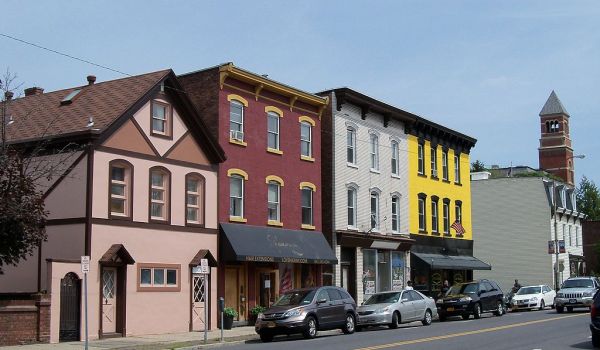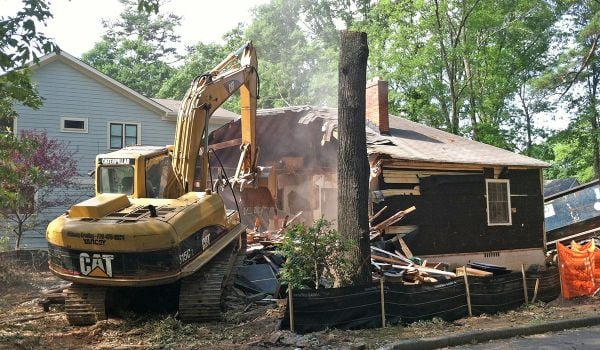About a half-hour drive north from downtown Austin, just off the I-35 freeway, you can find one of the most cutting-edge innovations in a city that has worked hard to earn a reputation as an innovation hub. The Texas capital welcomes thousands of tech CEOs, investors, thinkers and leaders to discuss the latest innovations at the annual South by Southwest Conference & Festival. But this isn’t even on their radar.
Of course, this particular innovation doesn’t have much to do with the next big app or artificial intelligence. At this location on Wells Branch Parkway, the Housing Authority of the City of Austin recently acquired a property with 308 units of “luxury” housing, including a pool, a clubhouse with a billiard table, a fitness center and a business center. With a few swipes of the pen, half of those units became permanently affordable housing. The property wasn’t previously in foreclosure, nor was it seized through eminent domain. In a highly unusual move for a local public housing authority, in these times especially, it simply went out and purchased the property on the open market
It wasn’t the first property that the Housing Authority of the City of Austin acquired in that manner, and it won’t be the last. Since 2012, the housing authority has acquired more than 2,100 units of existing housing, reserving half of those units to rent at rates affordable to families between 30 to 120 percent of area median income. The rest of the units rent out at market rates, although families with Section 8 rental assistance vouchers can rent those market-rate units and still only pay 30 percent of their monthly income in rent.
The open-market acquisition strategy is part of the housing authority’s response to the wave of displacement and loss of affordable housing in and around Austin. It’s making a small dent in what the city considers a shortage of 45,000 units for residents earning less than 60 percent of median family income.
“We’re a city struggling with the impact of gentrification, the loss of affordable housing units in our city and region,” says Michael Gerber, president of Austin’s housing authority.
Austin voters concur, recently approving a ballot measure to raise $250 million in bond financing for affordable housing — the city’s largest-ever affordable housing ballot measure. City council formed an anti-displacement task force earlier this year, and the task force recently issued its draft recommendations. Researchers at the University of Texas have rolled out a tool to map areas where displacement is happening or is at risk of happening.
At the same time Austin is trying to deal with its growth challenges, it’s also trying to stop perpetuating the historical pattern of racial segregation created and enforced by zoning and other local policies.
“Austin is shaped by a tremendous amount of growth, [but] it’s also shaped by a history of segregation that goes back to 1928,” says Gerber.
That was the year the Fowler city plan proposed the creation of a “Negro District” in Austin. Leading up to that point, some black economic refugees during the Great Migration era never left the South entirely, ending up in cities where they found refuge, such as Baltimore, Durham, Atlanta, New Orleans, Houston and Austin. As author Richard Rothstein documents in “The Color of Law,” the response of policymakers in these cities was strikingly similar to those in the North — they carved out areas officially or unofficially designated for “negroes” and eventually for other people of color.
In Austin, during the early years of the Great Migration, black families had settled all over the city. The Fowler city plan proposed designating the southeast part of Austin as the Negro District. But a 1917 U.S. Supreme Court decision had already struck down explicitly racial zoning laws. So instead, in the years after 1928, the city found other ways to push black families into the designated zone. Whenever the city built new schools in the northern and western parts of Austin, those schools were designated whites-only, while building new schools for blacks-only in the Negro District. Anywhere there were black families living on a block in the northern or western parts of Austin, the city would neglect maintenance until those families chose to move, finding that realtors or landlords would only sell or rent housing to black families in the Negro District.
As Austin’s black population gradually became isolated from the rest of the city, it became easy for all-white policymakers to neglect their needs. Redlining meant banks would ignore the same neighborhoods, resulting in the gradual deterioration of housing stock. Racial discrimination in the job market meant limited economic opportunity, leading to the concentration of black households, generational poverty, and subsidized housing in southeast Austin.
So it’s notable that the Housing Authority of the City of Austin has mostly been acquiring properties on the open market in the northern half of the city.
The housing authority is investing in its existing public-housing properties, too, expanding them through the Obama-era Rental Assistance Demonstration program. But ironically, it’s those same neighborhoods in southeast Austin where there is public housing that now face the most severe gentrification and displacement in the city.
This property acquisition strategy is not going to reverse displacement or segregation by itself, but the Austin housing authority can use history as a guide of what to do or what not to do.
“We’re intentional about that, we do not want to be part of adding to the concentration of poverty in areas that have had historically high levels of subsidized housing,” says Gerber. “Ultimately, it’s about tenant choice.”
Indeed, the housing authority’s strategy of acquiring properties on the open market began in 2012 as a response to Section 8 rental assistance voucher holders having trouble finding quality, desirable housing in Austin. “We felt there were too few landlords accepting the voucher,” says Gerber.
Only around 40 jurisdictions around the U.S. outlaw discrimination against rental assistance voucher holders — known as “source of income discrimination.” (Although even where it is outlawed, it’s difficult to enforce.)
Texas is the one state that explicitly prohibits counties and municipalities from enacting laws against source-of-income discrimination.
Gerber thinks that by entering the private market, the public housing authority can change negative perceptions of Section 8 tenants among landlords.
All that said, as a public housing authority, being short of cash is par for the course. In order to acquire properties on the open market, the housing authority typically has to partner with somebody who does have access to cash. Taking a page out of the Wall Street playbook, the Housing Authority of the City of Austin has partnered with a real estate investment trust, or REIT, in order to acquire two properties so far, including this most recent acquisition, on Wells Branch Parkway.
Congress created REITs in 1960, hoping to allow a wider swath of Americans access to the benefits of real estate investment, including income from tenant rents. Trading on U.S. stock exchanges today, you can find more than 200 REITs, with a total market value of more than $1.1 trillion. There are also privately-owned REITs. While Congress had noble intentions in mind when it created them, today REITs are primarily known for acquiring properties and pushing developers or landlords to prioritize investor returns over community benefit.
For the Wells Branch Parkway property, the housing authority partnered with Community Development Trust, a “for-purpose” REIT established in 1999. Community Development Trust is one of a handful of REITs that invests exclusively in affordable housing, with a current portfolio of 7,150 affordable housing units in 35 properties across 20 states. While some REITs acquire properties with the intention to sell them for profit after a few years, Community Development Trust takes a long-term ownership position — it still owns a stake in the first property it ever invested in, Summerfield Townhouses in East Hartford, Connecticut.
One advantage of being a REIT is the familiarity factor when it comes to approaching investors such as banks or insurance companies. Allstate Insurance, Prudential, MetLife, and all the biggest banks in the country can be found among Community Development Trust’s shareholders. By selling shares to investors in exchange for quarterly dividends, REITs aggregate large amounts of cash that they can deploy quickly on deals such as this Austin one to acquire the Wells Branch Parkway property.
The Austin housing authority deals come with a special twist — the housing authority keeps the deed to the land, extending a new long-term ground lease for the buildings (including affordability restrictions) to a joint venture owned by the Austin Affordable Housing Corporation (a nonprofit affiliate of the housing authority) and investors. For the Wells Branch Parkway property, in addition to Community Development Trust, the newly-formed Austin Housing Conservancy is also an investor in the property.
“Having the partners that have the equity to come in on joint ventures with us makes all the difference in the world,” says Ron Kowal, who leads the Austin Affordable Housing Corporation. “The key to it is finding those partners that are like-minded with our mission so that we’re all on the same page with what we’re trying to achieve here. It’s not just a real estate investment where everybody wants to make a bunch of money.”
When the Austin housing authority keeps the deed to the property, it also means there are no property taxes owed, which is the only public subsidy tied to project (in addition to any Section 8 voucher holders who may have moved in by their own choice).
It’s the second time Community Development Trust has partnered with the Housing Authority of the City of Austin; the first was a 642-unit acquisition in 2015. The REIT has yet to work with any other public housing authority on a similar deal.
“It’s the only mechanism I’m aware of in the affordable housing world where a private organization like ours is helping a public organization expand its portfolio of property,” says Michael Lear, vice president at Community Development Trust. “It’s kind of incredible that they’re a housing authority that is increasing the property it owns.”
This article is part of The Bottom Line, a series exploring scalable solutions for problems related to affordability, inclusive economic growth and access to capital. Click here to subscribe to our Bottom Line newsletter.

Oscar is Next City's senior economic justice correspondent. He previously served as Next City’s editor from 2018-2019, and was a Next City Equitable Cities Fellow from 2015-2016. Since 2011, Oscar has covered community development finance, community banking, impact investing, economic development, housing and more for media outlets such as Shelterforce, B Magazine, Impact Alpha and Fast Company.
Follow Oscar .(JavaScript must be enabled to view this email address)


















